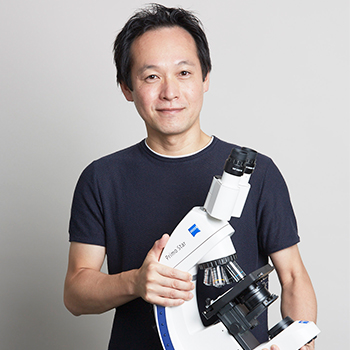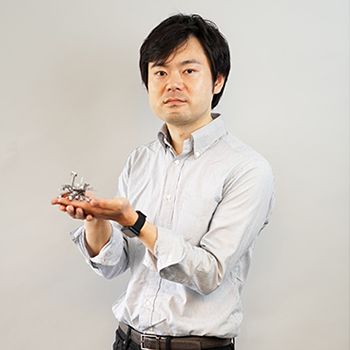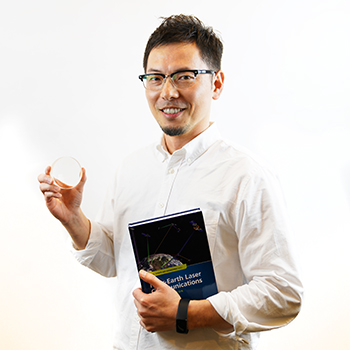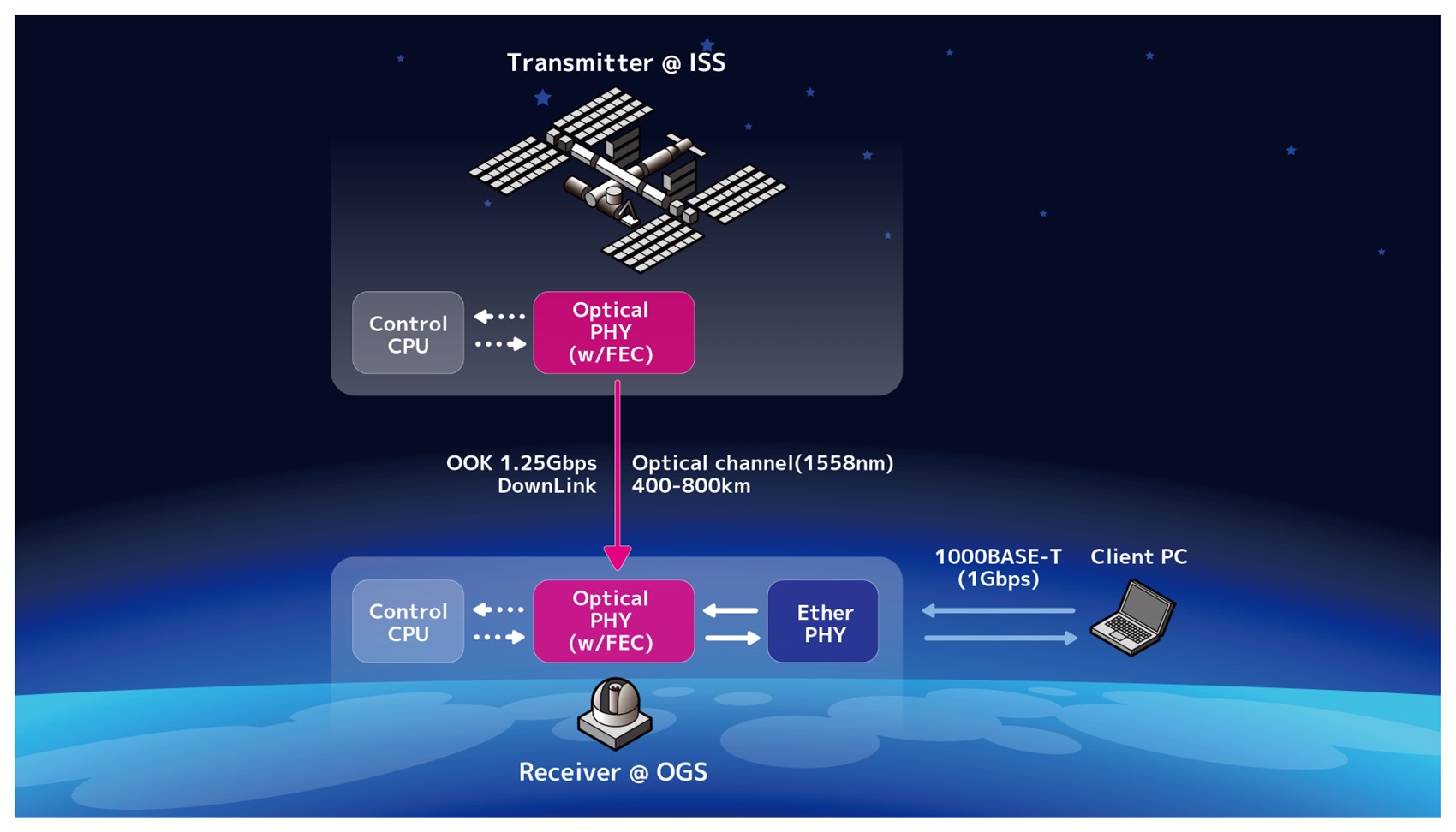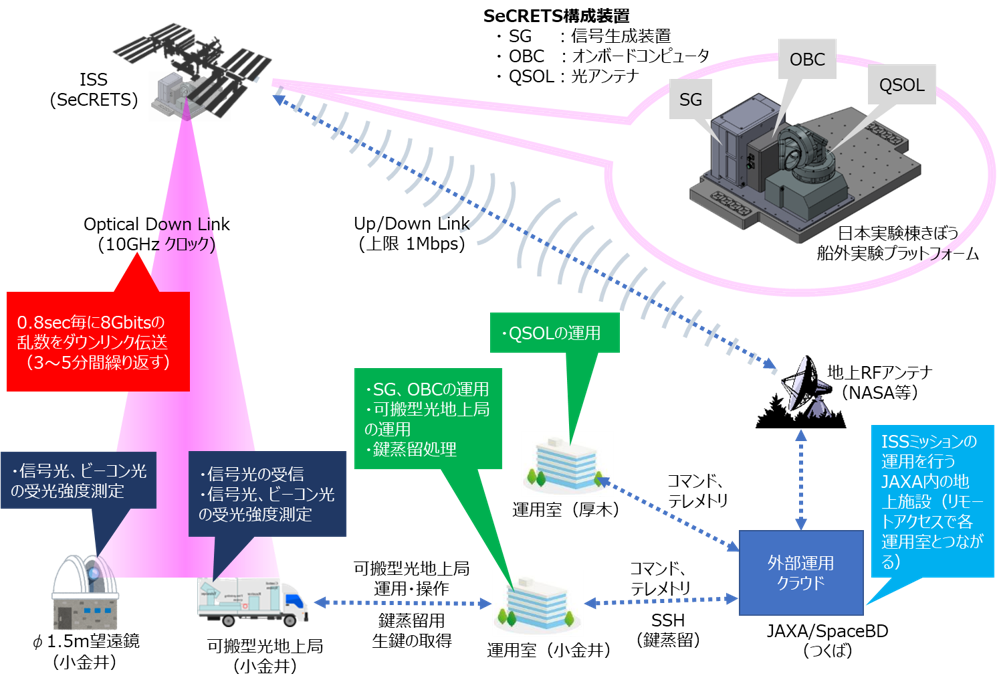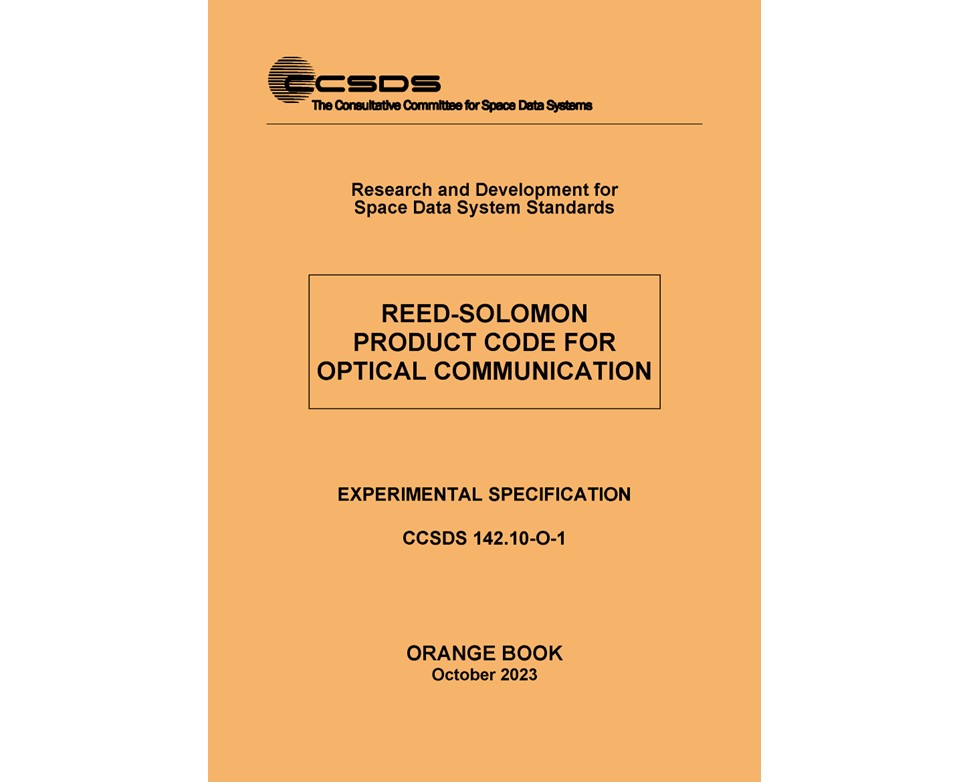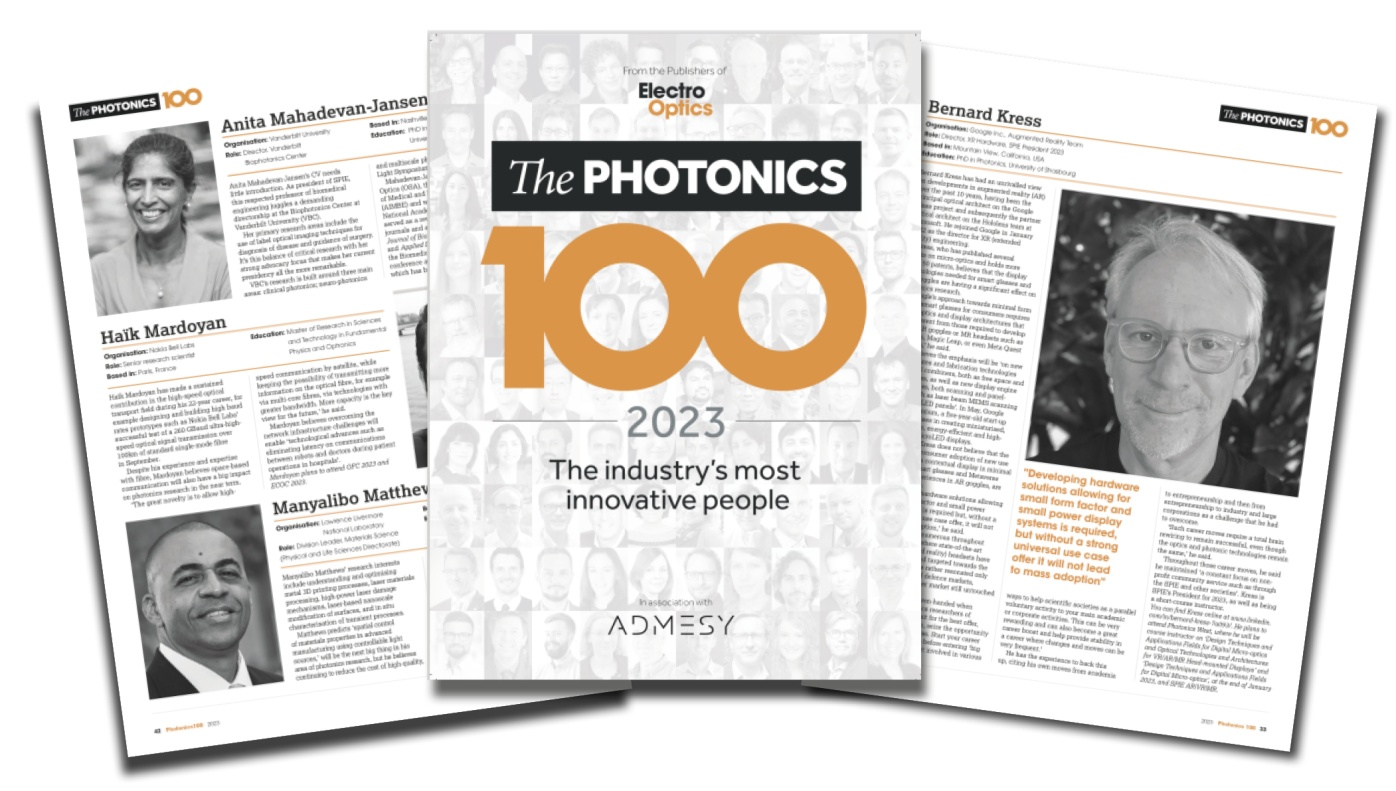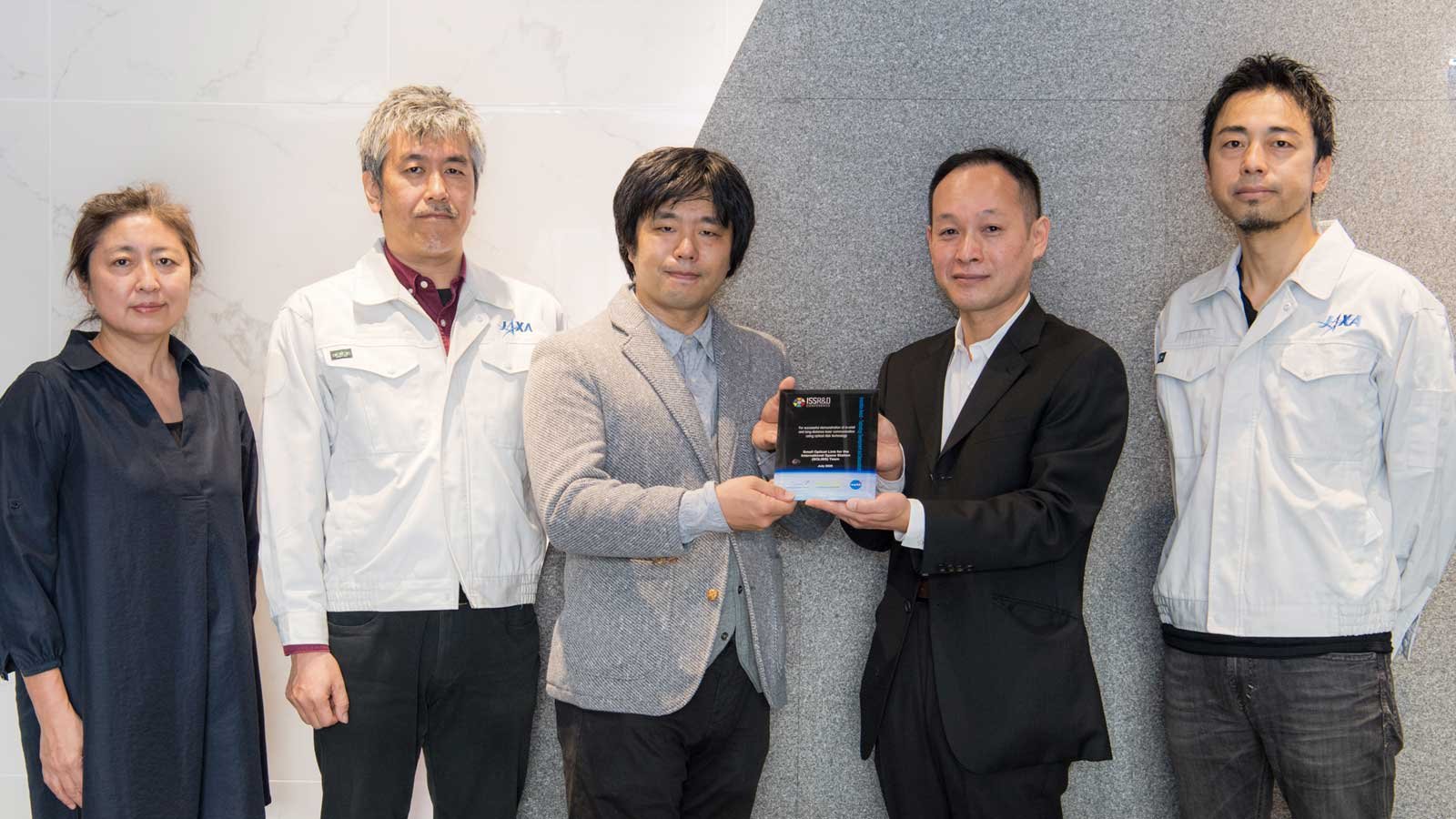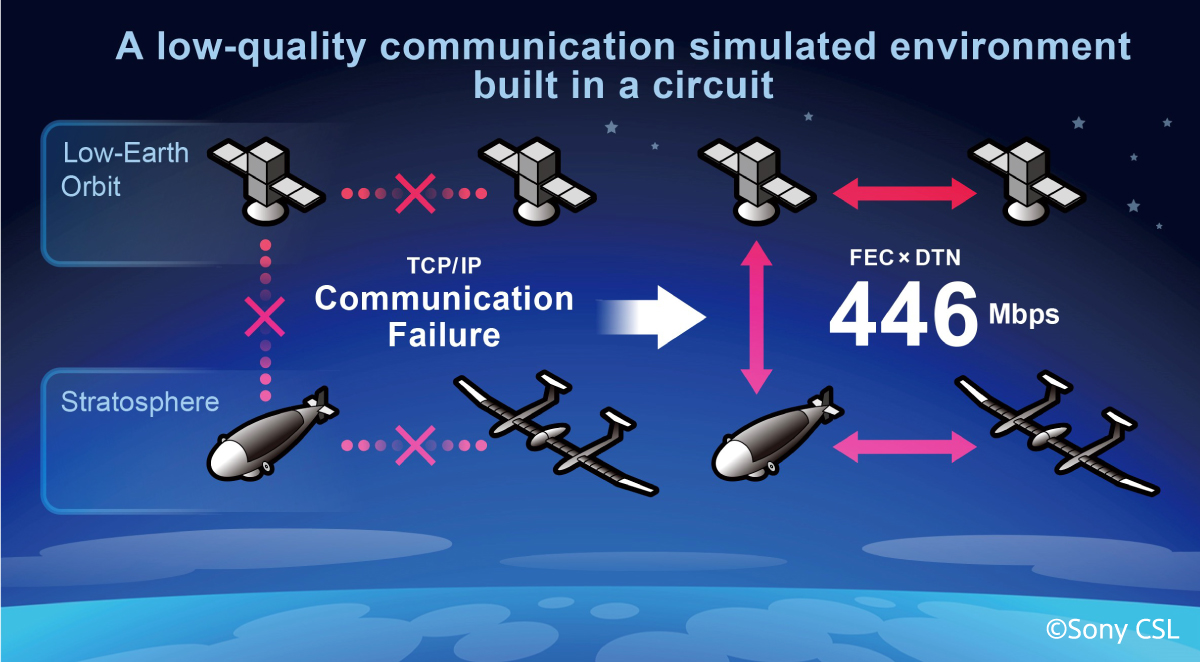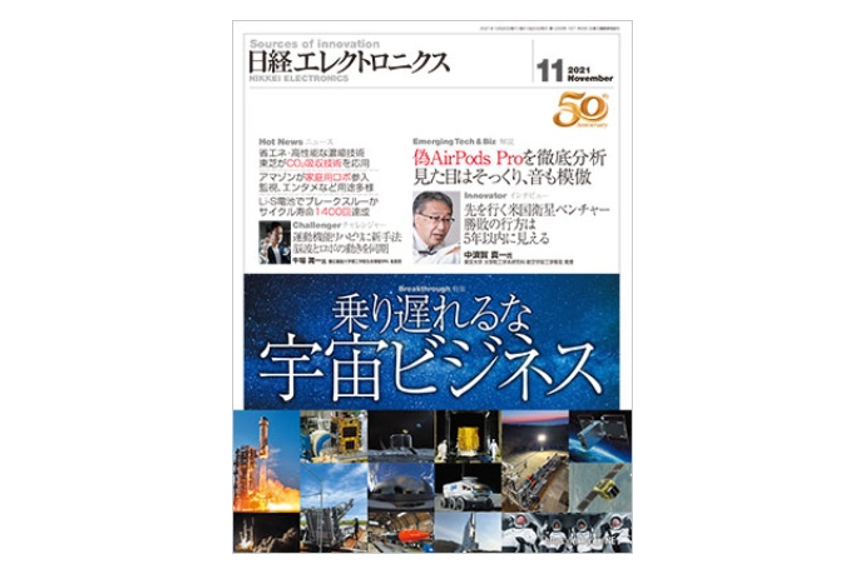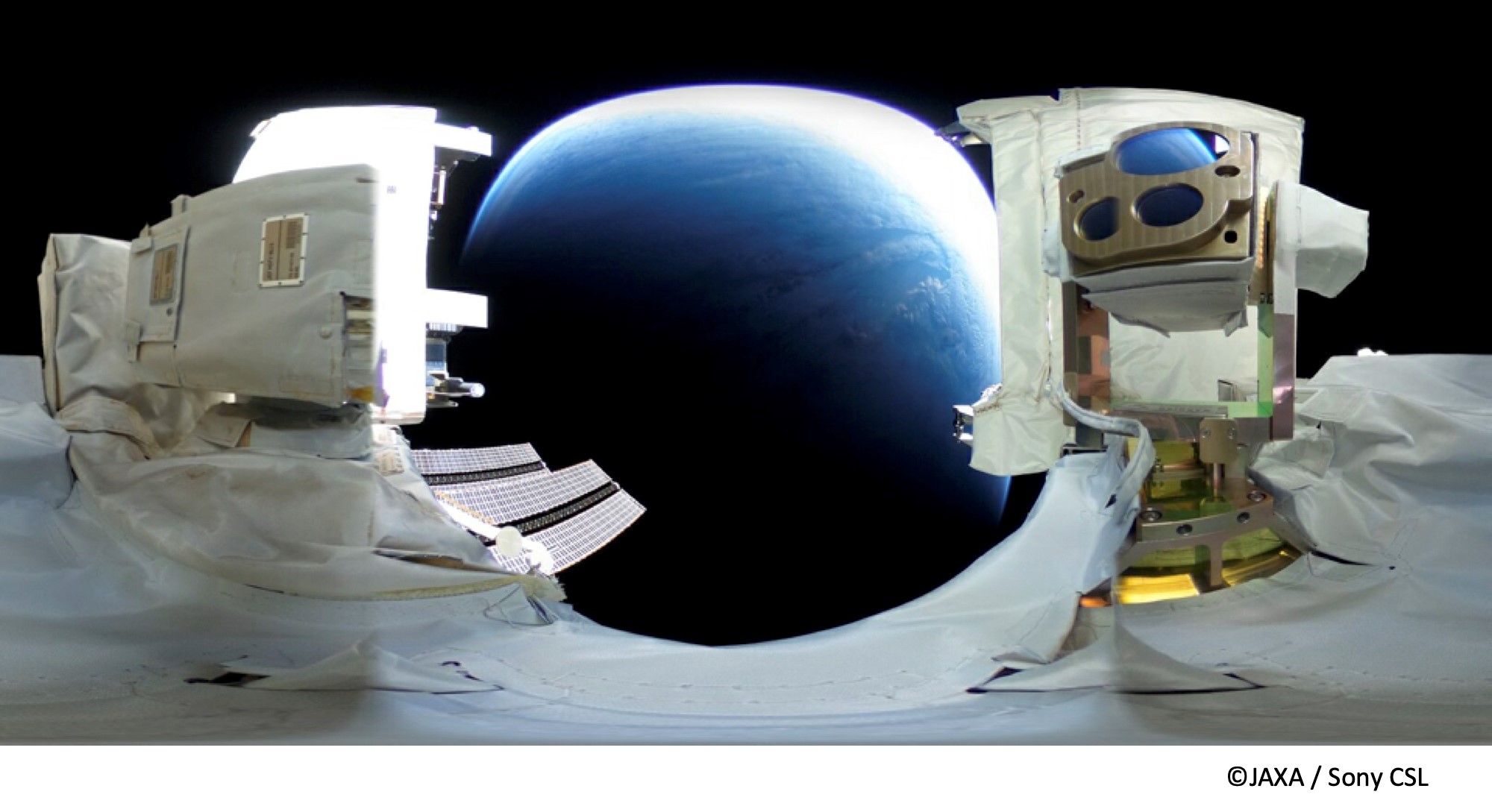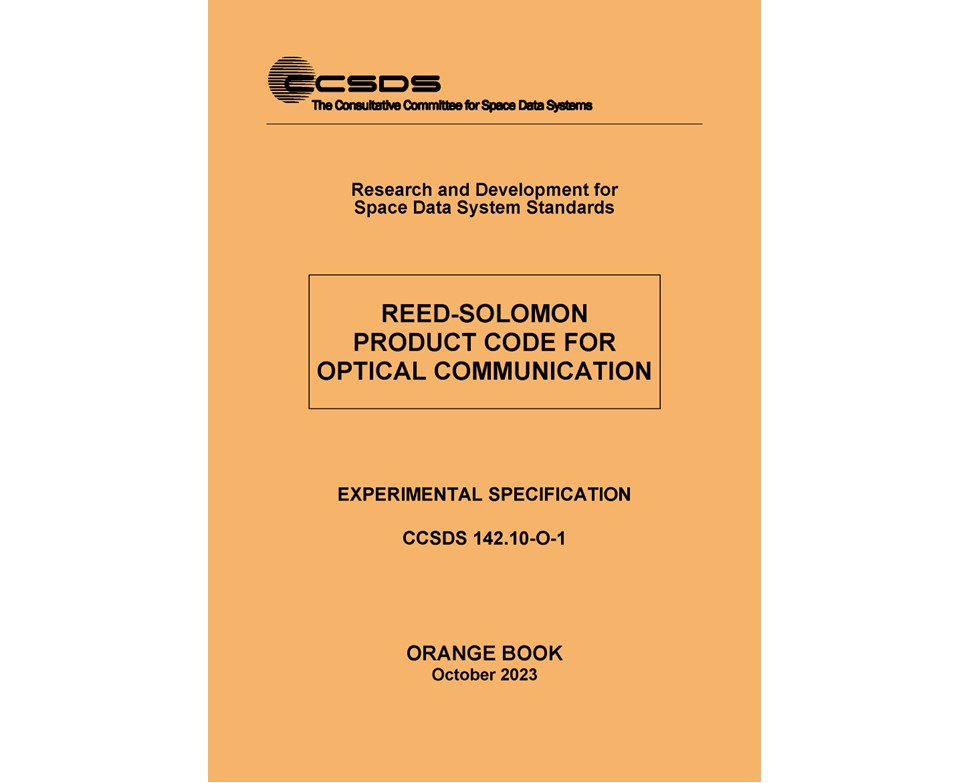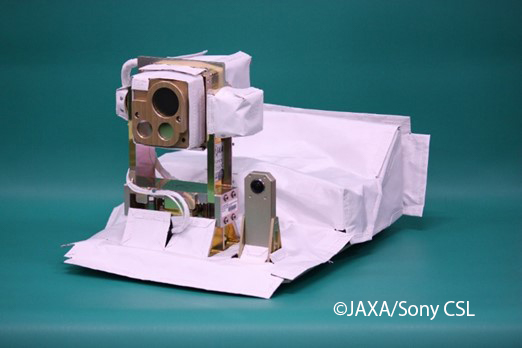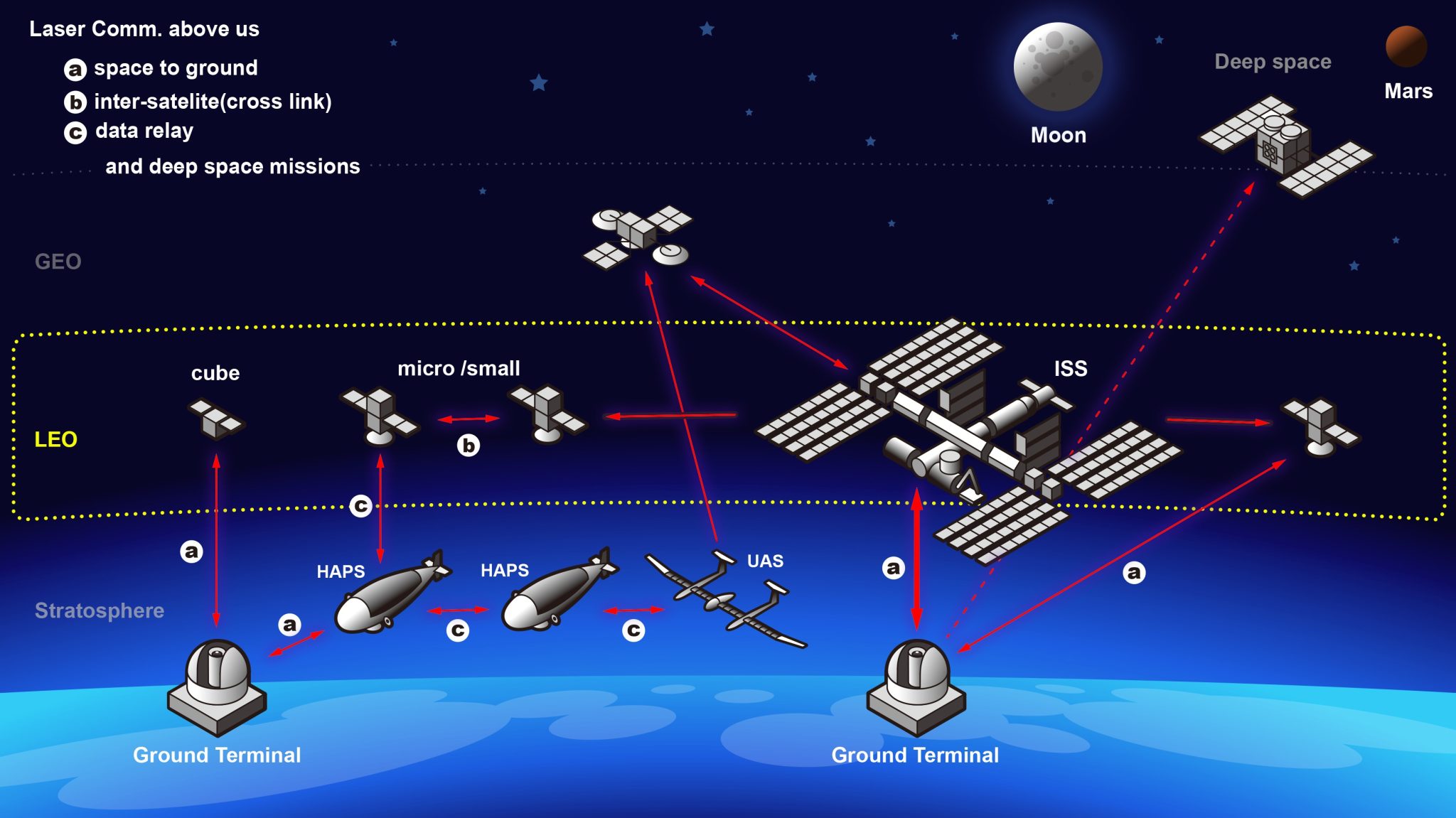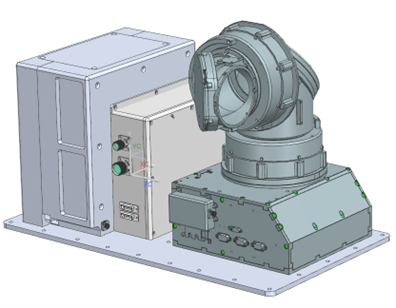
QSOL構成図
QSOL(Quantum-Small Optical Link)は、総務省からの委託を受け国立研究開発法人情報通信研究機構(NICT)、次世代宇宙システム技術研究組合(NeSTRA)、国立大学法人東京大学、スカパーJSAT株式会社とソニーCSLが軌道上技術実証のために共同開発した、小型衛星光通信システム「SeCRETS(SECuRE lasEr communicaTionS terminal for Low Earth Orbit)」の光通信アンテナ部分となります。SeCRETS は2023年8月2日に国際宇宙ステーションへ向けて打ち上げられ、「きぼう」日本実験棟の船外実験プラットフォーム(中型曝露実験アダプター(i-SEEP))に設置されました。その後、低軌道上のISSから地上の可搬型光地上局への10GHzクロックの光通信により秘密鍵共有を実施し、さらにその鍵を用いたワンタイムパッド暗号によりISSと地上局とでの情報理論的に安全な通信の実証に成功しました※1。QSOLは、地上に設置された光地上局を捕捉追尾するためのジンバル機構や、光地上局に通信光を送信する精追尾光学系、及びそれらの制御装置に加え、1.25 Gbpsの高速光通信を実証するための信号処理装置等から構成されています。
2024年3月に行われた実験では、QSOLの潜望鏡型小型ジンバルシステムを使用してNICTの可搬型光地上局からアップリンクしたビーコン光を捕捉追尾し、上記可搬型光地上局、およびNICTの1.5m光地上局に向けてダウンリンク光を出射し、光通信リンクを確立させるという光アンテナの軌道上実証に成功しました。さらに、動画データをQSOLが送信するビーコン光に乗せて軌道上からダウンリンクし、NICTの1.5m光地上局にて受信することにも成功しました※2。これには、ソニーCSLが開発した自由空間光イーサネット通信用誤り訂正技術※3が使用されています。
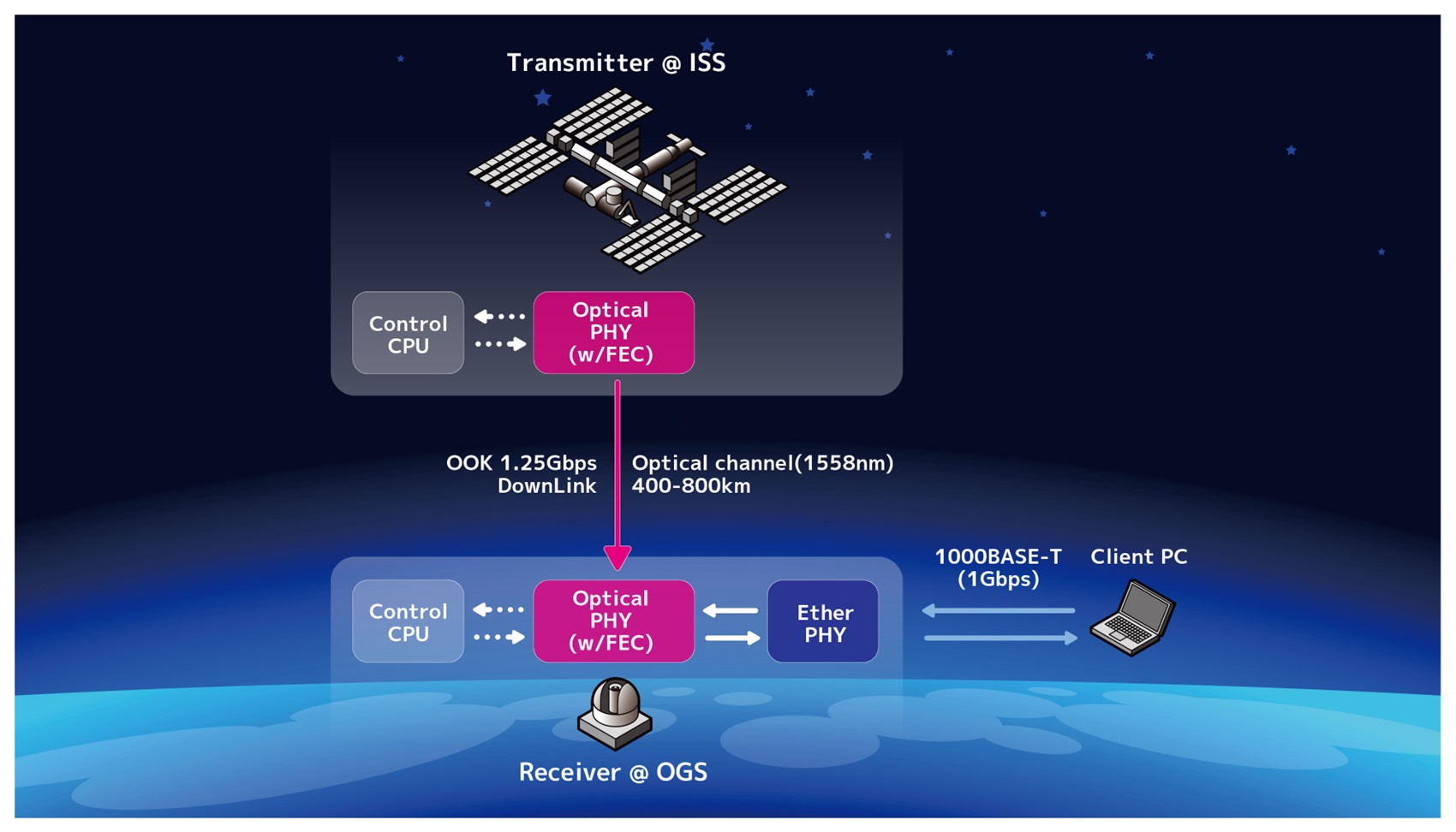
今回の実験の概念図
※1 国際宇宙ステーションと地上間での秘密鍵共有と高秘匿通信に成功
~ 衛星量子暗号通信の実用化に期待 ~
https://www.sonycsl.co.jp/press/prs20240418/
(2024/4/18 プレスリリース)
※2 NICT光地上局
宇宙通信に係わる技術を開発するために設置された望遠鏡施設。東京都小金井市に口径1.5m、1.0m、茨城県鹿嶋市に口径1.0m、沖縄県国頭郡恩納村に口径1.0mの計4基の望遠鏡が設置されている。今回の実験では口径1.5mの望遠鏡を使用した。
※2 宇宙データシステム諮問委員会(CCSDS)の予備検討規格(142.10-O-1 REED-SOLOMON PRODUCT CODE FOR OPTICAL COMMUNICATION
https://www.sonycsl.co.jp/tokyo/15743/

Structure of QSOL
QSOL (Quantum-Small Optical Link) is the optical antenna component of the compact Secure Laser Communications Terminal for Low Earth Orbit (SeCRETS). It was commissioned by the Ministry of Internal Affairs and Communications to demonstrate the technology in orbit and was jointly developed by National Institute of Information and Communications Technology (NICT), Next generation Space system Technology Research Association (NeSTRA), The University of Tokyo, SKY Perfect JSAT Corporation, and Sony CSL. SeCRETS was launched on August 2, 2023, to the ISS and installed to the IVA-replaceable Small Exposed Experiment Platform (i-SEEP) on the outside of "Kibo." Subsequently, experiments of 10 GHz clock optical transmission between the ISS in low Earth orbit and a portable optical ground station were successfully conducted to share private keys and to demonstrate information-theoretically secure transmission of one-time pad encryption.1
For this experiment, QSOL's compact periscope gimbal system tracked and acquired an uplink from NICT's portable optical ground station and then downlinked to their 1.5 m optical ground station. An optical link was established, demonstrating the use of QSOL in orbit. Additionally, video data was downlinked from QSOL in orbit and received by NICT's 1.5 m optical ground station.2 This transmission used the free-space optical Ethernet communications error-correction technology developed by Sony CSL.3

Conceptual diagram of the experiment
1 Successful private key sharing and high confidentiality communications between the International Space Station and the ground ~ Expectations for practical satellite quantum cryptography communications ~ https://www.sonycsl.co.jp/press/prs20240418/
(18 Apr 2024, press release, Japanese only)
2 NICT Optical Ground Station
A telescope facility built to aid the development of technology related to space communications. The station has a total of four telescopes with apertures of 1.5 m and 1.0 m in Koganei, Tokyo; 1.0 m in Kashima, Ibaraki; and 1.0 m in Onna, Kunigami-gun, Okinawa. The experiment this time used the telescope with a 1.5 m aperture.
2 142.10-O-1 Reed-Solomon Product Code for Optical Communication, an experimental specification (orange book) of the Consultative Committee for Space Data Systems (CCSDS).

